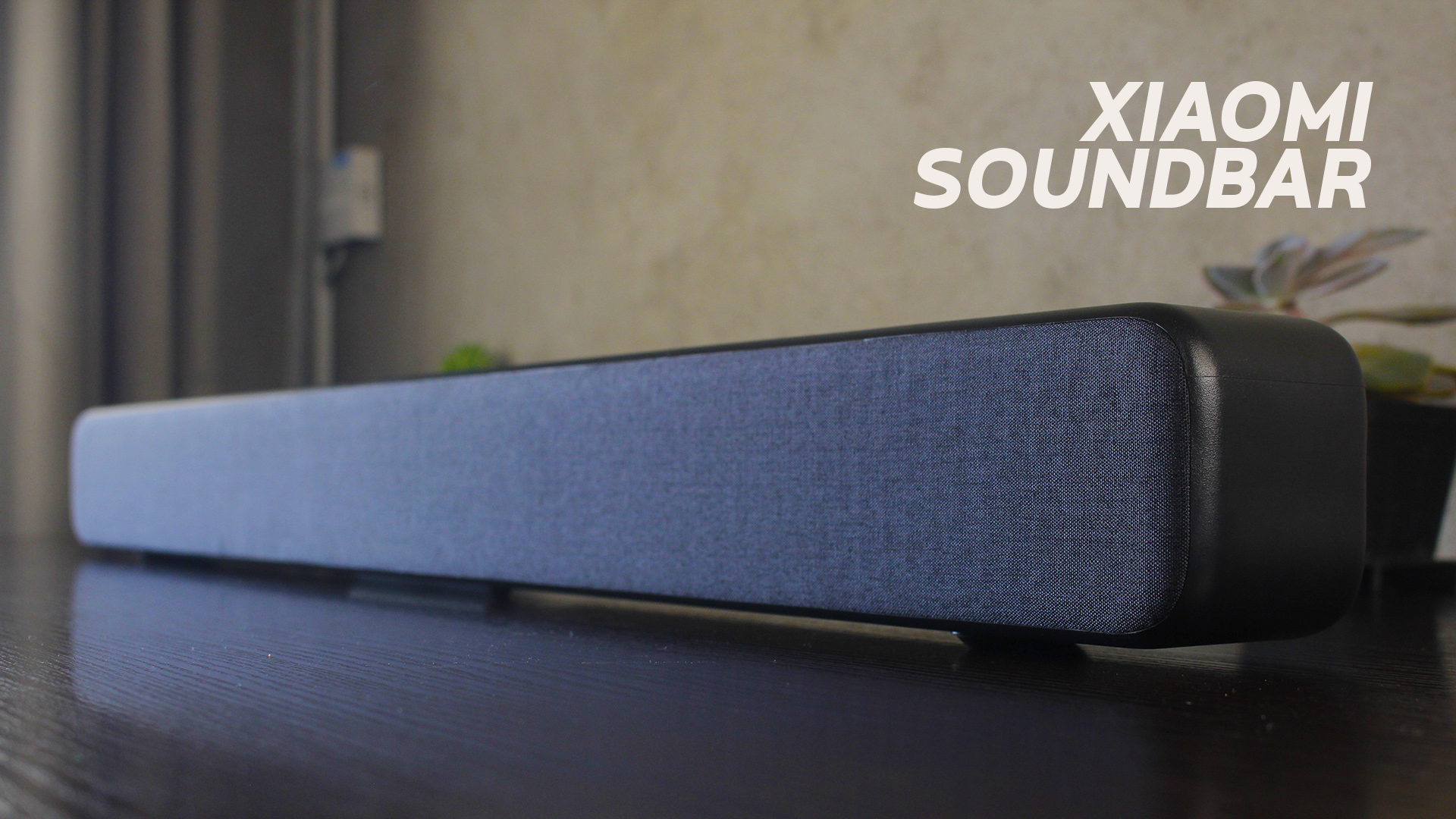This one is a little bit bigger, a bit less simple, and a bit more expensive than the Redmi TV soundbar. This should all mean that the Xiaomi TV soundbar is better. Well, it is better but not by much. And it’s going for US$110 at the Mi Store. They are the ones who gave it to us to give a test run for a couple of days.
More inputs and a fabric finish
So on the outside, it’s still a familiar elegant design. The fabric now covers the 8 speakers and we also have a selection of Bluetooth, Aux, S/PDIF, Line In, and Optical audio for inputs. The buttons are also now conveniently placed on the top of the soundbar with each input getting its own indicator light so you know which source is selected.
In terms of sound, it is better than the Redmi TV soundbar but the gap is pretty close. The sound stage is the same in how wide it is and how good it is at separating the left and right channels. It’s got that covered. Its biggest gains are in a further improvement in how rich the sound is.
Better sound from more hardware
It’s got 8 speakers. 4 left and 4 right. Each of these speakers is tuned to work best in a certain frequency range. So the tweeters will handle the high-pitched sounds, the 4 mid-range speakers will handle the mids and the 2 woofers will handle the low end. This is how it one-ups the Redmi sound bar.
So in those cases where the volume is beyond 70%, the soundbar still produces great sound. There is not much fade in the bass or drowning out of the mids and highs when the bass drops. And when the highs get high, you don’t hear that crackling or distortion. Essentially you are paying more for a more polished sound experience…and extra flexibility with inputs.
That said it is still a soundbar and so not really a speaker to use for professional audio use. It’s got built-in woofers to provide a more consistent bass than the Redmi speaker however it still is not sufficient enough for bass-heavy hip-hop and amapiano music. The woofers it comes with are just not big enough to move enough volume of air for that thunderous bass. But that top end is nicely taken care of with the rest of the speakers.
If the Redmi soundbar was covering 60 to 70% of the full audio spectrum then this one is around 80 to 90%. With a majority of the deficit being just on the bass end of things. Overall it’s a solid performer.
It’s better but not close to double the price better
At US$110 the Xiaomi soundbar obviously comes close to other soundbars which also come with subwoofers. It’s still a bit more affordable than the Dolby Atmos-enabled standalone soundbars from Sony, LG, or Samsung. And it’s not really double the value of the Redmi TV soundbar unless you really need the added convenience of more inputs.
Definite wins for the Xiaomi soundbar are the good left and right audio separation, even richer sound thanks to just more hardware, a wider selection of audio inputs, and a more convenient placement of the buttons on top of the soundbar. And if you are interested in this particular one you can get it from Mi Store Zimbabwe. You can check out their catalog on WhatsApp by clicking here.














Comments
8 responses
I got a little 2.1 (integrated) Hisense soundbar that was about $10 more than this and I honestly enjoy the soundbar life now. It fits perfectly under my monitor and sounds good almost all the way up in volume. Shame this soundbar wasn’t on the radar back then coz the volume control on the Hisense is so chunky! It feels like it only has about 12 steps! It has a hyper aggressive power management system where if there is silence for 3-4 seconds, the amp seems to turn off and then take a second to turn back on when sound resumes. It also has a documented fatal flaw that can brick early builds if you use e-arc, so thats one more feature I wasted money on🤣
On a side note, I have an ancient Panasonic 5.1 radio that at least needs some new capacitors if I’m going to get another 20 years out of it, so if y’all know any good electricians in Harare with a specialty towards stereos, drop their business contacts below! Thanks
The WhatsApp link seems to be broken
Indeed
It’s working on desktop.
What a strange quirk! Switched my browser to desktop mode and it worked, but I would have needed a second phone to scan(laptop tapped out long ago) 😅
The Xiaomi Soundbar is a popular audio device that can be used to enhance the audio quality of a television or home theater system.
These sound bars are compact enough to hide almost anywhere. Combined with the multi directional speakers, it is difficult to tell the direction the sound is coming from.
The decor team at church hid one of these and no one could identify the source of the sound.
Reading your content was enjoyable. I’m forward to see your post when it becomes live. Have success with your next update. This essay is very interesting and helpful.